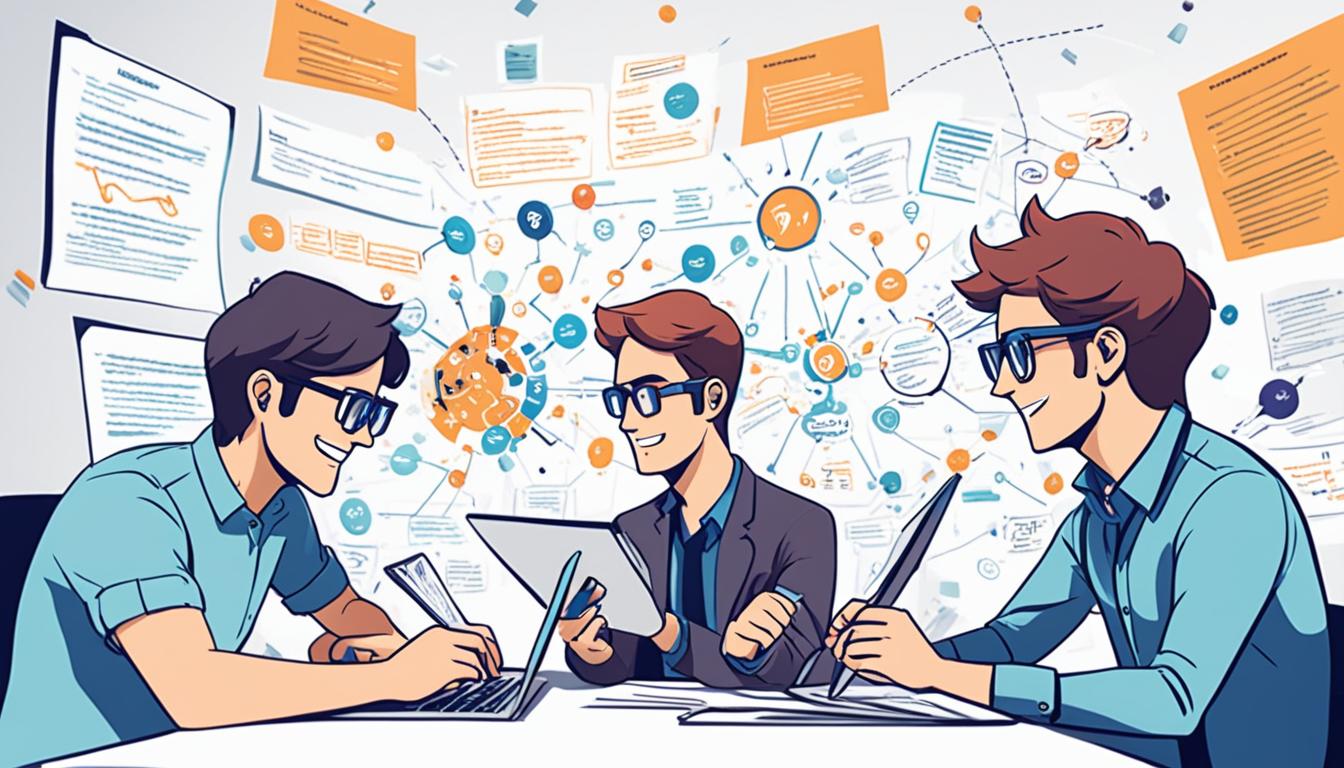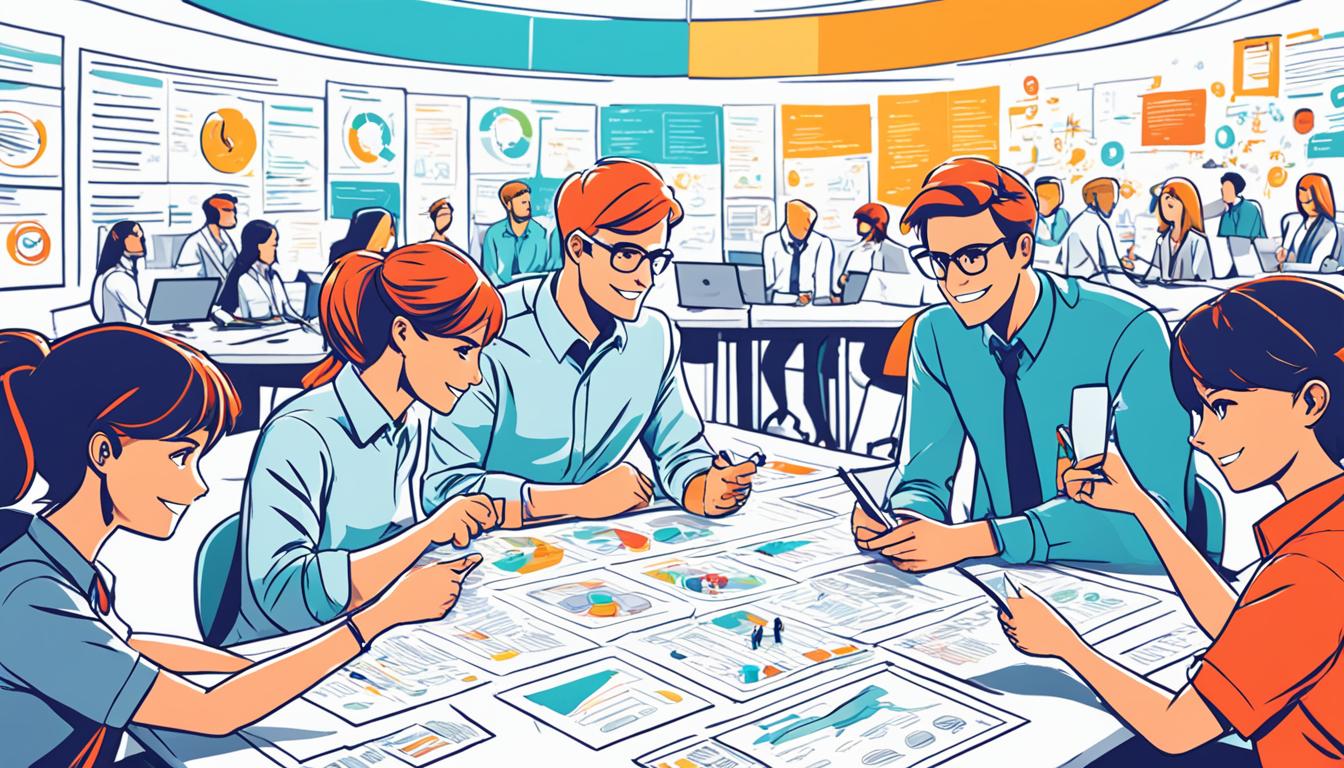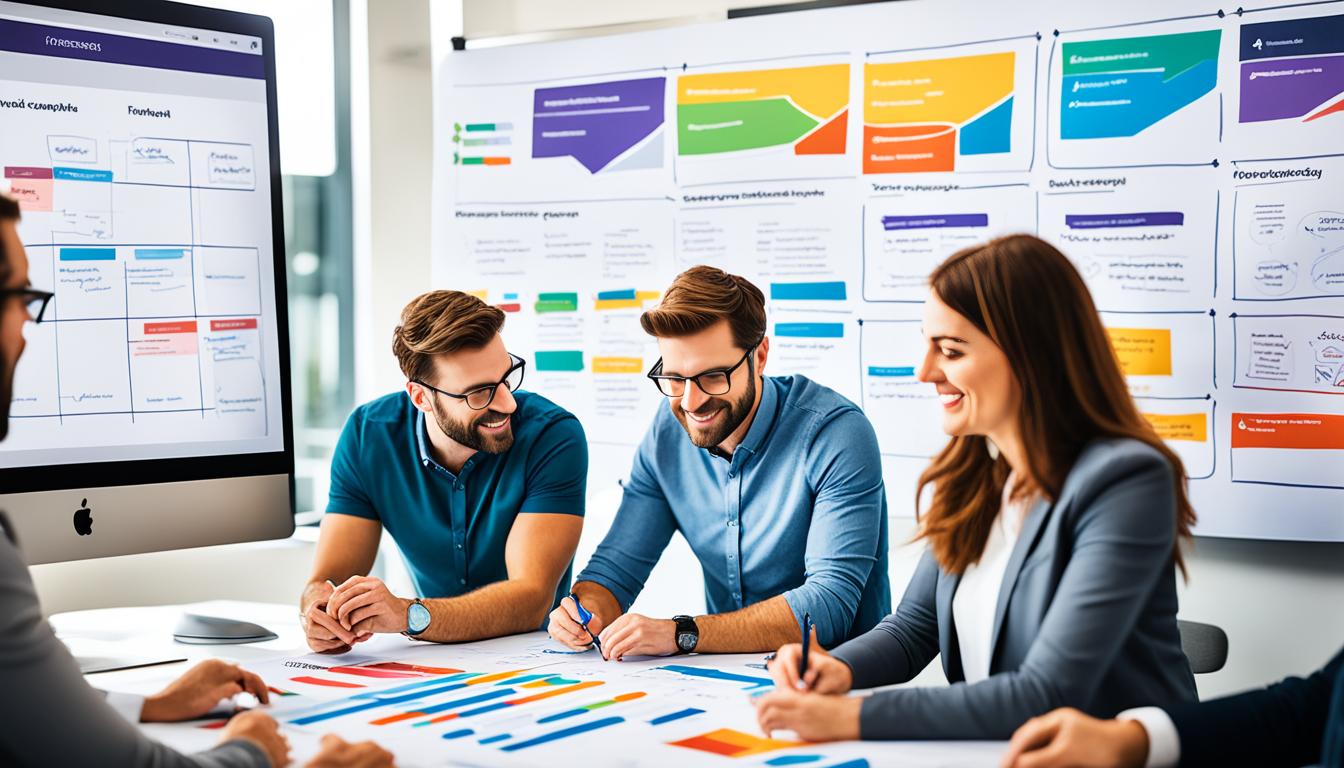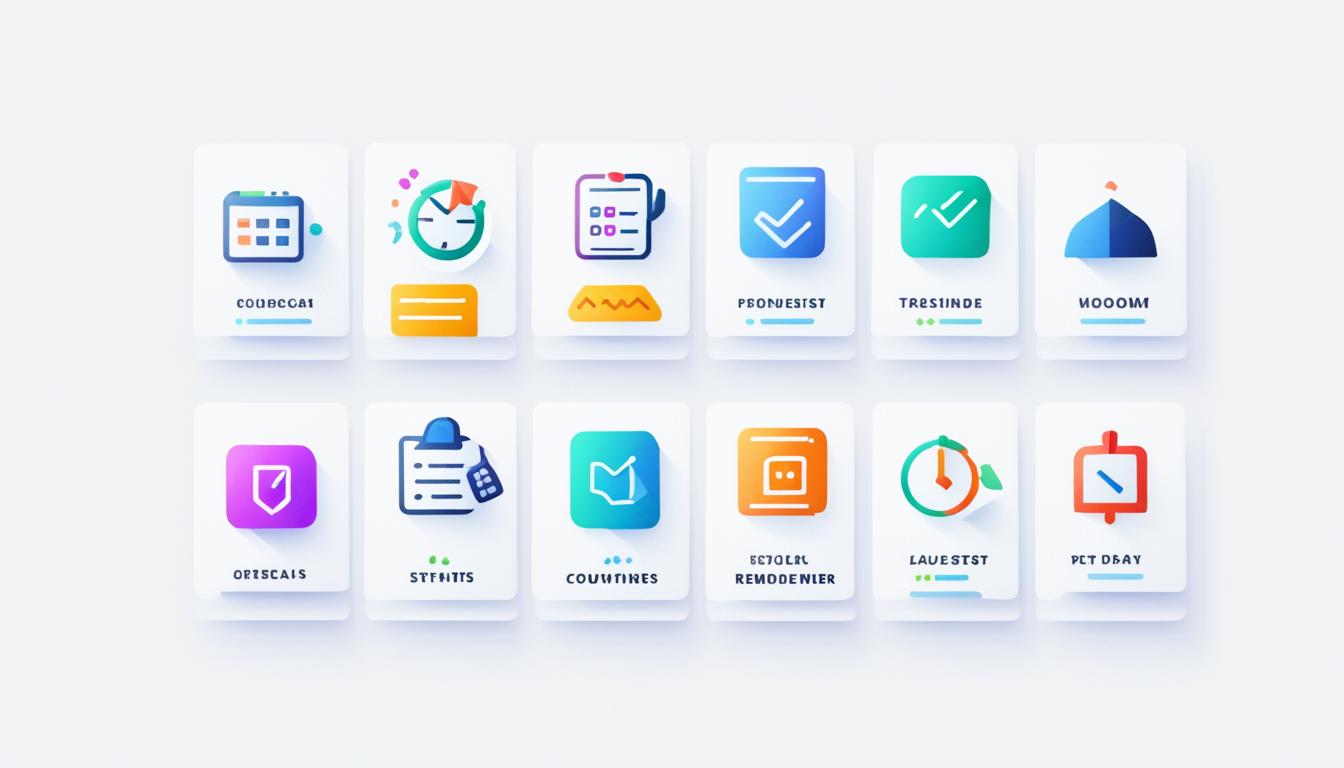
“Maximize Meeting Efficiency: How to Cut Costs and Boost Productivity””

“Time is the scarcest resource and unless it is managed, nothing else can be managed.” – Peter Drucker
Meetings are a vital part of any business, but all too often, they become a drain on time and resources. In fact, a survey conducted in the UK found that workers waste an average of 13 days per year in unproductive meetings. Executives spend a shocking two days a week preparing for meetings, which costs big companies a staggering $100 million per year.
With so much at stake, it’s crucial to find ways to maximize meeting efficiency, cut costs, and boost productivity. In this article, we will explore practical tips and strategies to make your meetings more effective, ensuring that valuable time is not wasted.
Key Facts About Unproductive Meetings
In the world of business, meetings are a common occurrence. However, not all meetings are productive. In fact, unproductive meetings not only waste valuable time but also incur significant costs for companies. Let’s take a look at some key facts about unproductive meetings:
- UK workers waste an average of 13 days per year in unproductive meetings.
- Executives spend more than two days each week preparing for meetings, taking away valuable time from other tasks.
- The cost of unproductive meetings for big companies amounts to a staggering $100 million per year.
- Despite spending 15% of their working hours in meetings, only 11% of these meetings are considered productive.
- A surprising 39% of people admit to dozing off during meetings, indicating a lack of engagement and effectiveness.
- Furthermore, 70% of individuals have admitted to bringing other work to meetings, highlighting the perception of wasted time.
These statistics shed light on the impact of unproductive meetings on organizations. Not only do they consume valuable time and resources, but they also lead to disengagement and reduced productivity among meeting attendees. It’s crucial for businesses to address the issue of unproductive meetings and implement strategies to optimize their effectiveness.
Tips to Make Meetings More Productive
To make your meetings more productive, there are several key strategies you can implement:
- Define the purpose: Before scheduling a meeting, carefully consider whether it is necessary. Ensuring that each meeting has a clear objective will help you stay focused and productive.
- Set an agenda: Create a detailed agenda and share it with all meeting attendees in advance. This allows participants to come prepared and ensures that the discussion stays on track.
- Designate a leader: Appoint someone to lead the meeting and keep the conversation moving. This individual should be responsible for facilitating discussion, managing time, and ensuring everyone’s contributions are valued.
- Invite the right people: Only invite individuals who have a specific role or expertise relevant to the meeting topic. Including too many people can lead to unnecessary distractions and a loss of focus.
- Consider competing priorities: Take into account the commitments and priorities of your participants when scheduling meetings. Avoid conflicting with other important tasks or appointments.
- Establish ground rules: Set clear ground rules for the meeting, such as limiting interruptions and side conversations. This fosters a respectful and productive environment for everyone.
- Ensure understanding of jargon: If your industry or team uses specialized terminology, make sure all participants understand the meaning of these terms. Clarify any jargon or acronyms to prevent misunderstandings.
- Invite feedback: Encourage active participation and collaboration by inviting attendees to share their thoughts, ideas, and concerns. Valuing diverse perspectives can lead to more effective decision-making.
- Experiment with alternative formats: Consider innovative meeting formats such as stand-up meetings or hybrid meetings that combine in-person and virtual participation. These formats can help maintain engagement and productivity.
“A productive meeting starts with clear objectives, a well-structured agenda, and the right people in attendance.”
Remember, productive meetings don’t end when the meeting itself concludes. It is crucial to assign follow-up actions and responsibilities to ensure that decisions and discussions are translated into tangible results. Sharing relevant documents, such as meeting minutes or action plans, will also help reinforce the productivity achieved during the meeting.
Implementing these tips will not only improve meeting productivity but also foster a culture of efficiency and collaboration within your organization.
Next Steps: Applying Productivity Strategies to Your Meetings
Now that you have learned valuable tips for making your meetings more productive, it’s time to put them into practice. Start by analyzing your upcoming meetings and identifying areas where you can apply these strategies. Remember, small changes can have a significant impact on meeting effectiveness.
By implementing these tips and leveraging the power of productive meetings, you can optimize your team’s time, improve decision-making, and drive results that contribute to the overall success of your organization.
The Impact of Inefficient Meetings
Inefficient meetings can have a significant impact on organizations, leading to wasted time and expenses. According to a survey conducted by the Harvard Business Review, many senior managers find that meetings hinder their ability to complete their own work, with 65% reporting this challenge. Additionally, 71% of respondents stated that their meetings were unproductive and inefficient, further highlighting the issue at hand. What’s more, 64% of individuals felt that meetings came at the expense of deep thinking, showcasing the opportunity costs associated with inefficient meetings.
These findings emphasize the negative consequences of inefficient meetings on productivity. When meetings fail to effectively use time and resources, valuable opportunities are missed, hindering collaboration and reducing overall productivity levels. Inefficient meetings not only waste precious time but also prevent teams from bonding and building strong working relationships. The lack of efficiency can lead to frustration, demotivation, and a decline in employee engagement.
“Inefficient meetings can hinder your ability to complete important tasks, resulting in missed opportunities and decreased productivity.”
Inefficient meetings can be detrimental to organizational success and hinder progress. Organizations must prioritize the optimization of meeting efficiency to minimize time wastage, enhance collaboration, and maximize productivity. By addressing and rectifying inefficiencies, companies can improve their overall performance and achieve better outcomes.
The Difference Between Productivity and Efficiency
In the context of meeting effectiveness, understanding the difference between productivity and efficiency is crucial. While both terms are often used interchangeably, they have distinct meanings that can impact resource usage and overall success.
Productivity measures the rate at which work is produced or completed. It focuses on output and the ability to generate more products or accomplish more tasks within a given time frame. In the context of meetings, increasing productivity means improving the quantity of work achieved during and after the meeting. It involves optimizing processes, streamlining discussions, and ensuring effective collaboration to achieve more tangible outcomes.
Efficiency, on the other hand, measures how efficiently resources are utilized to complete a specific task or achieve a desired outcome. In the context of meetings, increasing efficiency means utilizing fewer resources, such as time, money, and personnel, while still accomplishing the same amount of work. This could involve optimizing meeting structures, reducing unnecessary discussions, and eliminating time-consuming activities that do not contribute to the meeting’s objectives.
Both productivity and efficiency are essential for maximizing meeting effectiveness. By increasing productivity, you can ensure that more work is accomplished during meetings, resulting in tangible outcomes and progress. On the other hand, increasing efficiency allows you to make the most effective use of available resources, optimizing time, and reducing unnecessary costs. Achieving a balance between productivity and efficiency is key to making meetings more effective and impactful.
Tips for Increasing Efficiency
To increase efficiency, it is recommended to consolidate software processes by using platforms that allow managing multiple tasks from one place. This not only streamlines your workflow but also saves time and reduces the chances of errors caused by switching between different applications. By consolidating software processes, you can ensure that all your essential tools and data are easily accessible, increasing efficiency throughout your organization.
Documenting processes early is another key step in increasing efficiency. By documenting your processes, you create a comprehensive guide that helps new hires quickly understand their roles and responsibilities. It also enables you to create scalable procedures that can be easily replicated and improved upon as your business grows. Documented processes provide clarity, consistency, and accountability, ultimately leading to more efficient operations.
Excess meetings can be a significant drain on productivity and hinder efficiency. By eliminating unnecessary meetings or making them more focused and concise, you can free up valuable time for your team to dedicate to more important tasks. Consider using time boxing techniques to prioritize tasks and allocate specific time slots to complete them. Time boxing helps you stay focused and manage your time efficiently, ensuring that you make progress on your most critical projects.
Delegating or outsourcing non-strategic functions is another effective way to improve efficiency. By assigning tasks to individuals or teams with the necessary skills and expertise, you can optimize resource allocation and avoid micromanagement. This frees up your time to focus on high-priority tasks that align with your core competencies. Outsourcing certain functions to specialized service providers can further enhance efficiency by leveraging their expertise and efficiency in those areas.

Leveraging automation is a powerful tool to enhance efficiency in various aspects of your business. By automating repetitive and time-consuming tasks, such as appointment scheduling, data entry, and social media posting, you can save valuable time and allocate resources to more value-added activities. Automation can also reduce the likelihood of errors and allow your team to focus on tasks that require human creativity and problem-solving skills.
Implementing these tips for increasing efficiency can significantly improve productivity and drive success in your organization. By consolidating software processes, documenting procedures, eliminating excess meetings, using time boxing, delegating or outsourcing non-strategic functions, and leveraging automation, you can optimize your operations and achieve higher levels of efficiency in your daily tasks and workflows.
The Relationship Between Productivity, Efficiency, and Effectiveness
While productivity and efficiency are important, they do not guarantee effectiveness. Effectiveness refers to doing the right tasks that are most related to achieving results. Productivity and efficiency need to be combined with effectiveness to ensure high-quality work and positive outcomes.
Prioritizing impactful tasks and maintaining quality standards are essential for maximizing productivity and efficiency.
| Productivity | Efficiency | Effectivenes |
|---|---|---|
| Measures rates of production | Measures how efficiently resources are used to complete a task | Focuses on doing the right tasks that are most related to achieving results |
| Creating more products or finishing more work in the same amount of time | Using fewer resources to complete the same amount of work | Prioritizing impactful tasks and maintaining quality standards |
| Increases quantity | Optimizes resource usage | Maximizes quality |
By combining productivity, efficiency, and effectiveness, organizations can achieve optimal results and drive success in their operations.
Best Practices for Increasing Productivity
To increase productivity, it is recommended to implement the following best practices:
- Consolidate Software Processes: By consolidating software processes, you can reduce switching costs and create centralized data sources. This streamlines workflows and eliminates the need to navigate between multiple platforms, increasing efficiency and productivity.
- Document Processes Before Scaling: Before scaling your operations, it is crucial to document your processes. This ensures that new employees can easily understand and follow established procedures, resulting in smoother onboarding and increased productivity.
- Limit Excess Meetings: Excessive meetings can drain valuable time and hinder productivity. Limit the number of meetings you schedule and ensure that they have a clear agenda and purpose. This allows employees to focus on their tasks uninterrupted and maximizes their productivity.
- Use Time Boxing: Time boxing is a technique where specific time slots are allocated for different tasks or activities. By setting strict time limits for each task, you can prioritize your work effectively and avoid spending excessive time on non-essential activities. This helps optimize productivity and ensures that you make the most of your available time.
- Delegate or Outsource Tasks: It’s important to delegate tasks that are not directly related to your core responsibilities or areas of expertise. By properly delegating or outsourcing non-strategic functions, you can free up your time to focus on high-value tasks, consequently increasing productivity.
- Leverage Automation: Automation tools can significantly enhance productivity by automating repetitive and time-consuming tasks. Consider utilizing tools for appointment scheduling, data entry, social media posting, and other repetitive processes. This allows you to save time, reduce errors, and optimize productivity.
“By implementing these best practices, you can effectively increase productivity, improve efficiency, and ultimately drive the success of your operations.”
Implementing these best practices will enable you to optimize your workflows, eliminate time-consuming tasks, and ensure that your team operates at peak productivity levels. By consolidating software processes, documenting procedures, reducing excess meetings, using time boxing, delegating or outsourcing non-strategic tasks, and leveraging automation, you can significantly increase productivity and achieve your goals more efficiently.
Benefits of Increasing Efficiency and Productivity in the Workplace
Increasing efficiency and productivity in the workplace brings numerous advantages to organizations. By optimizing these factors, you can achieve better results, maximize overall performance, and drive success. Let’s explore the key benefits:
1. More Work Done with Fewer Resources
Improving workplace efficiency allows you to accomplish more tasks and projects using fewer resources. It means making the most of your existing workforce, technology, and tools. By streamlining processes and eliminating unnecessary steps or bottlenecks, you can ensure that your team operates at its highest potential, leading to increased output.
2. Improved Time Management
Increased productivity leads to better time management in the workplace. By optimizing processes, eliminating time-wasting activities, and adopting effective time management techniques, employees can allocate their time more efficiently. This enables them to focus on important tasks, meet deadlines, and avoid the stress of feeling overwhelmed.
3. Reduced Costs
Efficiency and productivity improvements often result in cost reductions for organizations. By eliminating inefficiencies and streamlining processes, you can reduce unnecessary expenses, such as overtime costs, wasted materials, and unnecessary meetings. This in turn positively impacts the bottom line, allowing organizations to allocate resources to more strategic initiatives or investments.
4. Enhanced Employee Satisfaction
When employees are able to work in an efficient and productive environment, it enhances their satisfaction and engagement. A well-organized workplace reduces stress, frustration, and burnout, leading to increased job satisfaction and morale. Productive employees are more likely to feel valued and motivated, which contributes to a positive work culture and higher retention rates.
5. Increased Focus on Quality
Efficiency and productivity improvements enable organizations to allocate more time and resources towards delivering high-quality work. When employees are less burdened by inefficiencies and time constraints, they can dedicate more attention to detail, quality assurance, and continuous improvement. This focus on quality translates into better outcomes, improved customer satisfaction, and enhanced reputation.
6. Competitive Advantage
Organizations that prioritize workplace efficiency and productivity gain a competitive edge. By accomplishing more in less time, organizations can deliver faster turnaround times, meet customer demands, and adapt to market changes quickly. This agility allows businesses to outperform competitors, attract new customers, and establish themselves as industry leaders.
Embracing workplace efficiency and productivity benefits both the organization and its employees. It enables organizations to achieve more with fewer resources, optimize time management, reduce costs, boost employee satisfaction, focus on delivering quality work, and gain a competitive advantage.
| Benefits | Description |
|---|---|
| More Work Done with Fewer Resources | Efficiency enables achieving more tasks with fewer resources. |
| Improved Time Management | Enhanced productivity leads to efficient time management. |
| Reduced Costs | Efficiency improvements lead to reduced operational costs. |
| Enhanced Employee Satisfaction | Productivity improvements contribute to increased employee satisfaction. |
| Increased Focus on Quality | Efficiency enables organizations to prioritize quality outcomes. |
| Competitive Advantage | Efficiency and productivity provide organizations with a competitive edge. |
Conclusion
By implementing the tips and best practices mentioned in this article, you can maximize meeting efficiency, cut costs, and boost productivity. Defining the purpose of your meetings and setting clear agendas will help keep discussions focused and ensure that time is well spent. Inviting the right people who have a specific role to play in the meeting will contribute to more productive outcomes.
Establishing ground rules, such as respecting everyone’s time and encouraging active participation, will foster a more efficient meeting environment. Consolidating software processes and documenting procedures can streamline workflows and save valuable time. Additionally, using time boxing techniques will help prioritize tasks and optimize productivity.
Remember, achieving meeting efficiency and productivity improvement is not just about doing more work—it’s about doing the right work in an effective manner. By combining productivity, efficiency, and effectiveness, you can achieve optimal results and drive success in your operations. Make the most of every meeting by implementing these strategies, and watch productivity soar.































